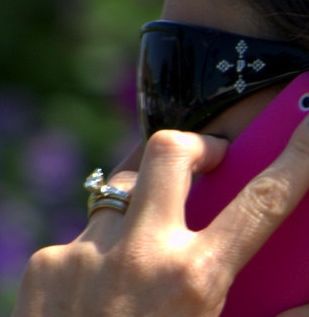“That’s what agents and acquisition editors are looking for–something they don’t want to put down.” —Ray Rhamey
Writers are told to end each chapter with a cliffhanger that keeps the reader from inserting a bookmark and going to sleep.
Tweetable
- Would a chapter with these endings make you turn the page?
click to tweet
- Tomorrow was another day.
- She smiled. “You’ve made me happy today, Mark.”
- She huddled down in her hiding place and drifted off to sleep.
I imagine you’d be inserting the bookmark. Why?
- All provide stopping places. Whether the character’s situation is bad or good, each scene ends with quiet closure.
- Readers are left with no reason to keep reading.
Here are two chapter endings that contain a hook.
Example 1 from Sweet Mercy by Ann Tatlock:
“Well,” I said, “nice to meet you.”
“Yeah, you too. Oh, and welcome to Ohio, I guess. But listen, just watch out for the red-eyed devil.”
“The what?”
“Marlene!”
“I said I’m coming!” She started to go, and then turned back. “But don’t worry. You’re pretty safe as long as it’s daylight. He mostly comes out at night.”
I wanted to ask her what she was talking about, but before I could say another word she had run off, laughing, to join her family.
Comment: Okay, I want to learn who the red-eyed devil is. I’ll read one more chapter.
Notice how Tatlock winds down the chapter at the end of the day with goodbyes between the main character, Eve, and Marlene. A nice stopping place. EXCEPT Marlene, brings up the danger of a red-eye devil appearing at night—which is fast approaching.
Tatlock didn’t stick the hook in as a gimmick. She ties it to the story and reveals who the red-eyed devil is shortly. These two elements are important.
Tweetable
- Your end-of-chapter hook must not be a gimmick but part of the story.
click to tweet
Example 2 from On the Threshold by Sherrie Ashcraft and Christina Berry Tarabochia:
Her cell phone rang.
Not now. She didn’t feel like talking to anyone except her husband…and maybe not even him. She checked the caller ID.
Beth. Okay, make that anyone except Jake or Beth.
She pulled to the side of the road. “Hi, honey.” Suzanne forced a pleasant tone.
“Mom?” Beth sniffed, voice breaking. “I need you.”
Comment: After an awful day, Suzanne considers what to do about dinner. A nice stopping place. BUT the phone rings, and her daughter’s in trouble. Okay. I want to know what Beth’s problem is. I’ll read on.
Again, the hook is tied to the story, and within a few pages we know Beth’s problem.
Here’s the last of my ho-hum chapter endings above transformed into a hook:
She huddled down in her hiding place. Minutes went by while she listened to the drone of cicadas in the darkness. Her eyelids grew heavy.
A loud huffing sounded.
Her lids shot open, and every muscle tensed. Only an angered bull made that kind of sound. Or a monster.
Tweetable
- Give readers a reason to start the next chapter.
click to tweet
How would you change one of the ho-hum endings to make the reader turn the page?






 RSS - Posts
RSS - Posts



When my daughter finds an author she loves, it’s always because “there are no stopping places.” Her words. Great post.
Davalynn, I’m so glad when I have to fight to put a book down so I can function on the morrow.
You are so right, Zoe. What is more like music to an author’s ears than a reader who says: “Thanks to you I stayed up almost all night. I just had to finish your book. I couldn’t put it down.” Not sure if they want me to say I’m sorry. But, I’m not! HeeHee
Paula, I’m hoping I can torture the sleep away from at least one person with my book coming out in November. In any case, I want to work harder on this aspect of novel writing.
Good post. Here’s mine:
Tomorrow was another day.
If she lived through the night.
She tucked the gun under her pillow and forced her eyes shut.
Oooh, Jane. Will someone come during the night? Maybe I could read one more chapter.